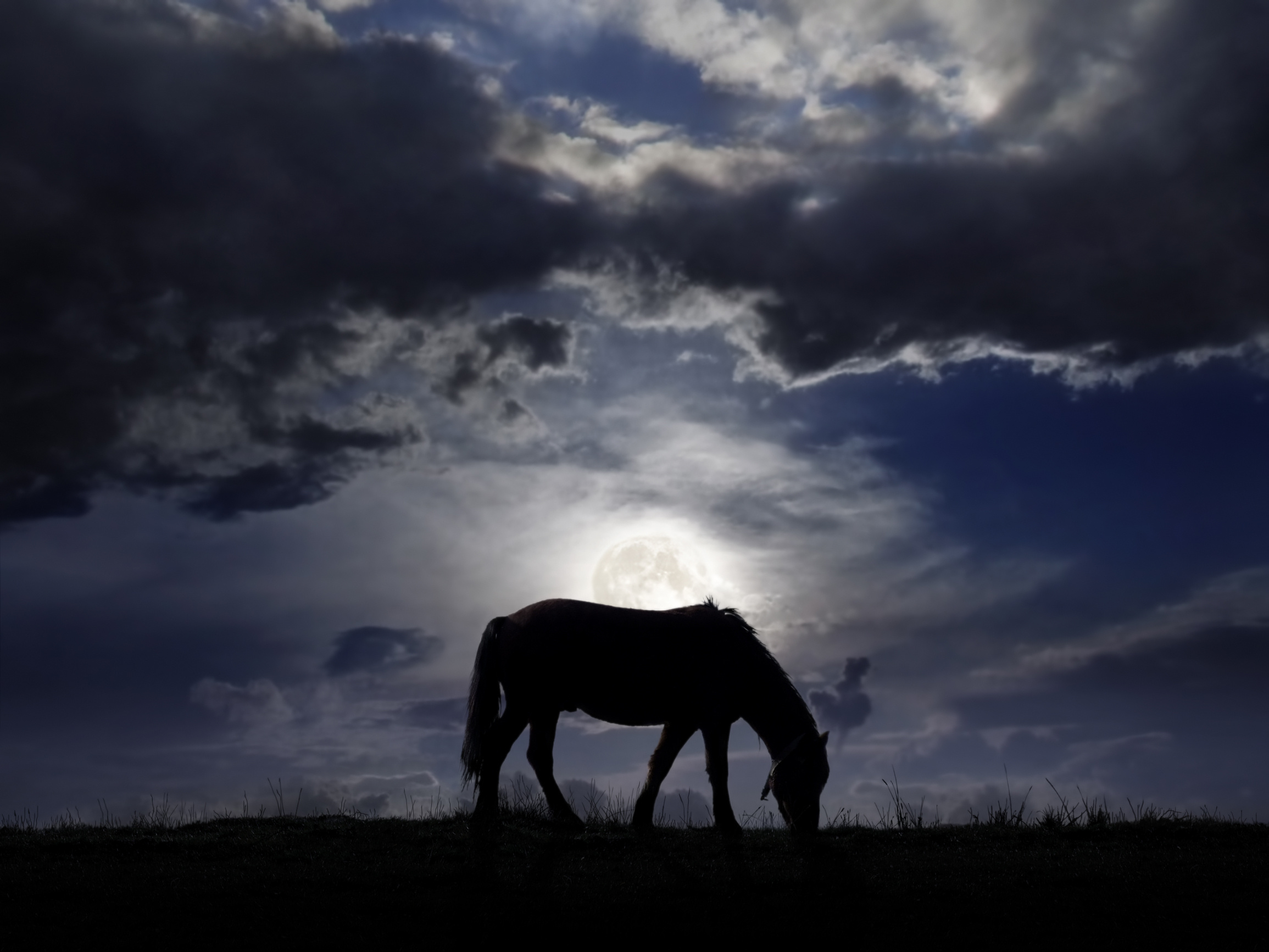Home > Horse Care > Your Horse’s Night Vision
Your Horse’s Night Vision
- February 6, 2023
- ⎯ Christine Barakat
Even when daylight hours are short, you needn’t restrict your riding times to places with full natural or artificial lighting. Horses have excellent night vision, and on a night lit by a partial moon or by bright stars alone, normally sighted horses can see as well as you do in full daylight.

Riding in the dark does make some riders queasy, but mounted horses are perfectly capable of safely negotiating open fields and lightly wooded areas after sunset. The extreme darkness of dense woods and those rare pitch-black nights isn’t entirely suitable for riding, but in familiar territory your horse can navigate well enough when you allow him to choose his own path and utilize his night vision.
Click here to read how your horse’s vision differs from yours.
Horses require approximately 15 minutes for their vision to adjust when moving between differently lighted environments. Remain on familiar paths and keep to a slow pace after emerging from a brightly lighted barn for an unlighted evening ride or when turning horses out for the night.
Sudden brightness takes an equal amount of adjustment, as you notice each time you flip the barn light switch for the predawn feeding: Every occupant squints and blinks until his eyes adapt.
This article first appeared in EQUUS magazine.
Don’t miss out! With the free weekly EQUUS newsletter, you’ll get the latest horse health information delivered right to your in basket! If you’re not already receiving the EQUUS newsletter, click here to sign up. It’s *free*!





